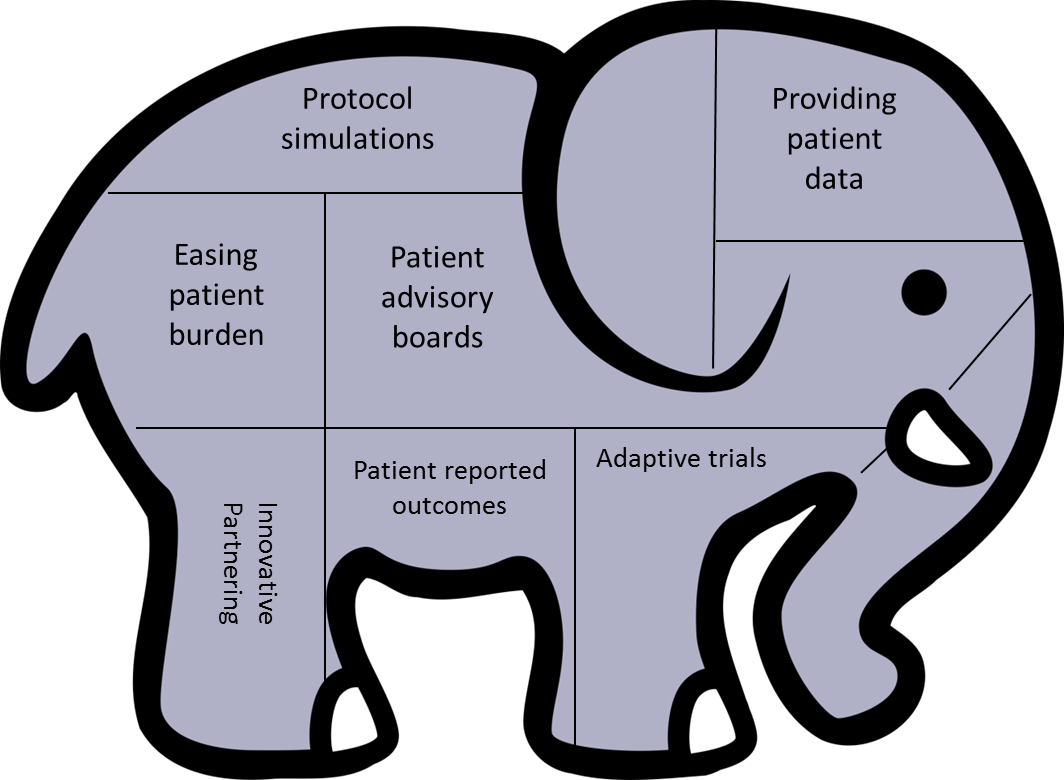Blog Post
Practical Strategies to Simplify Patient Centricity: Part 1—Overview
May 16, 2017
 Shann Williams has over 10 years of experience managing clinical trials. She is the Director of Operations of the Statistical and Clinical Coordinating Center for the division-wide Consolidated Coordinating Center sponsored by the National Institute of Allergy and Infectious Disease (NIAID). In addition, Shann serves as Rho’s Project Management Operational Service Leader, an internal expert sharing project management best practices, processes and training.
Shann Williams has over 10 years of experience managing clinical trials. She is the Director of Operations of the Statistical and Clinical Coordinating Center for the division-wide Consolidated Coordinating Center sponsored by the National Institute of Allergy and Infectious Disease (NIAID). In addition, Shann serves as Rho’s Project Management Operational Service Leader, an internal expert sharing project management best practices, processes and training.
This is the first in a series of blog posts on putting patient-centric principles into practice.
The term patient centricity is fraught with uncertainty for many. This term carries the nuances of widely varying practical application methods as well as theoretical disagreements from stakeholders in our industry. For example, an article in Applied Clinical Trials entitled FDA and Industry Share Perspectives on Patient Centricity contrasted the biopharmaceutical industry and the FDA’s perspectives on patient centricity and concluded that industry thinks patient centricity is patient engagement, whereas the FDA is focused primarily on developing clinically meaningful outcomes to patients.
Although it is understandable that we would be intimidated by the lack of regulatory guidance and the uncertainties of taking on risks in any relatively new area, I would argue that this isn’t rocket science. Some of the same practices we have known about for years that make for successful studies can be implemented to demystify patient centricity and provide a starting place.
Let’s take the well-known adage: How do you eat an elephant? One bite at a time, right? Specifically, how do we eat the elephant of patient centricity? We can employ simple, actionable, “bite-sized” strategies that will move us closer to a more patient centric approach.

I’m not planning to cover the entire elephant, but rather will focus on what we’ve learned that has proven successful. For additional information on “the whole elephant,” I encourage you to read the findings from this DIA/Tufts study.
Two high-level concepts that we’ve learned from years of clinical and community-based research have positive impacts on studies and are bite-sized portions toward patient centricity: easing patient burden and effective communication. And, as the DIA/Tufts study reported, these are well in line with what they called “study volunteer ease” which was found to have the biggest bang for a relatively small investment.
Easing Patient Burden
Implementing the same successful practices we’ve used to achieve high retention rates is a first step toward reducing patient burden and allowing for a more patient focused approach.
High participant retention is important for any clinical research trial. It is critical to our ability to reach power for study analysis and is an indicator of overall study success. Those of you reading this post are likely from about the same socio-economic demographic with similar life circumstances: a busy career and a busy life outside of work. How many of us would make the time to participate in clinical trials even when our careers hinge on their success? Very few of us, it seems, since it would currently take 1:6 Americans to participate in clinical trials to fulfill the enrollment goals for the studies currently listed on Clinicaltrials.gov.
Why is participation so low? Besides the risks and the poor perception of our industry, it is likely also because we know the burden and inconvenience is too great. Patients choose to participate in studies because the benefit of their participation outweighs their perceived risk, burden, and general inconvenience. Some patients are being altruistic while others are hoping their participation will improve their health. We can help to change the perception of clinical trials by making them less burdensome for patients overall.
The Urban Environment and Childhood Asthma (URECA) study is an observational birth cohort study currently in its 12th year. It was funded out of the National Institutes of Allergy and Infectious Disease. URECA currently has 606 total patients enrolled. In its first two years it had 89% retention rate and 461 of the 606 original patients are still enrolled (76% retention) 12 years into the study. That high retention is attributable to several patient-focused practices described in detail below. Patient focused practices start by looking at the study from the patient’s point of view.
For example, we cannot expect patients to accommodate our schedules. We have to think about the logistics of what we’re asking them to do from their perspective. Do they need to take off work? Will they need to miss school? Are they going to have to deal with the complexities and stress of hospital and clinic parking decks? How many of us ever complete surveys received in the mail actually return them? How many of us are annoyed by the constant barrage of emails in our inboxes? Are we more likely to respond to a text message or return a call left on our voice mail?
If we don’t think through these very simple things carefully, we are setting ourselves for enrollment challenges, the potential of multiple (and costly) protocol amendments, and we won’t be any closer to relieving the burden of clinical trial participation for our patients. Even if a protocol is designed with patient outcomes in mind, without implementing some basic principles, we’ve failed to take the patient into consideration.
These were the 8 patient-focused practices employed in the URECA study and discussed in detail in our publication in Clinical Trials from 2010:
- Call hours
- Consider conducting any reminder phone calls, follow-up questionnaires or recruitment and screening calls after regular business hours when patients are more likely to be available.
- Employ culturally competent staff
- Employing culturally competent staff that speak the patient’s native language, understand the nuisances of that specific population, and identify with challenges and considerations within that specific demographic and geographic location is imperative to putting patients first.
- Flexible visit scheduling
- Along the same lines as conducting calls after hours, is the clinic/site open on Saturdays? Consider scheduling changes that will allow patients to come in the early morning or evenings to avoid missing work and school.
- Provide reimbursements for transportation and parking (no brainer!)
- Host retention events
- This is an example of something that worked for this specific population that may not work for others and points back to really knowing your population via hiring competent staff. Since these were mothers and their young children, these events brought a sense of community. Patients got to know other mothers and children that were in the same study and were able to create relationships and deepen relationships with study staff.
- Offering home visits
- The success of this study hinged on our ability to meet the needs of this population. Young mothers with asthma who have babies with respiratory infections do not want to brave the winter in Boston to call a taxi to take them across town so that they can have a nasal lavage performed. This is not without risk though, and an option like this has additional implications that must be considered carefully.
- Cell phone or texting reimbursements
- This is especially important for those families who buy minutes.
- Distributing quarterly newsletters
- This is an easy way to make families aware of study status. The one from last December offered an update on the study retention rates and included indoor activities – making snowman cookies, connect-the-dots snowman for the children, and tips for staying safe in cold weather. These are more than just visit reminders or asthma educational materials, they are geared toward ensuring the patients feel engaged in the study.
These practices take careful pre-planning, but by incorporating just one principle based on the time, schedule, and budget for each study, we can move forward in the right direction toward putting our patients first.
Look for the second post in this series which will share some specific patient stories that highlight the importance of our second patient centric principle: effective communication.
